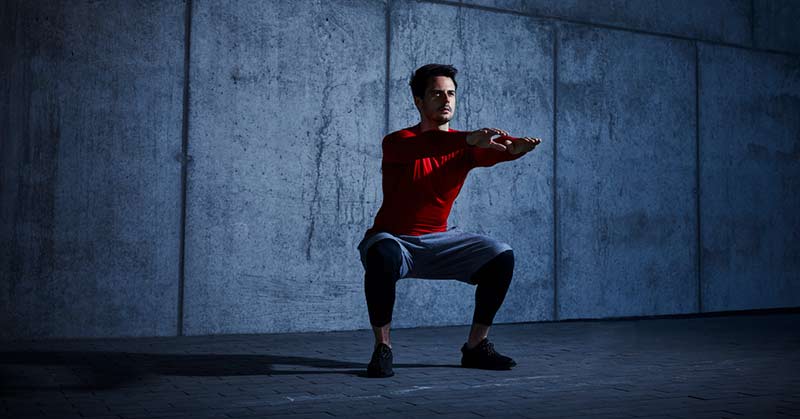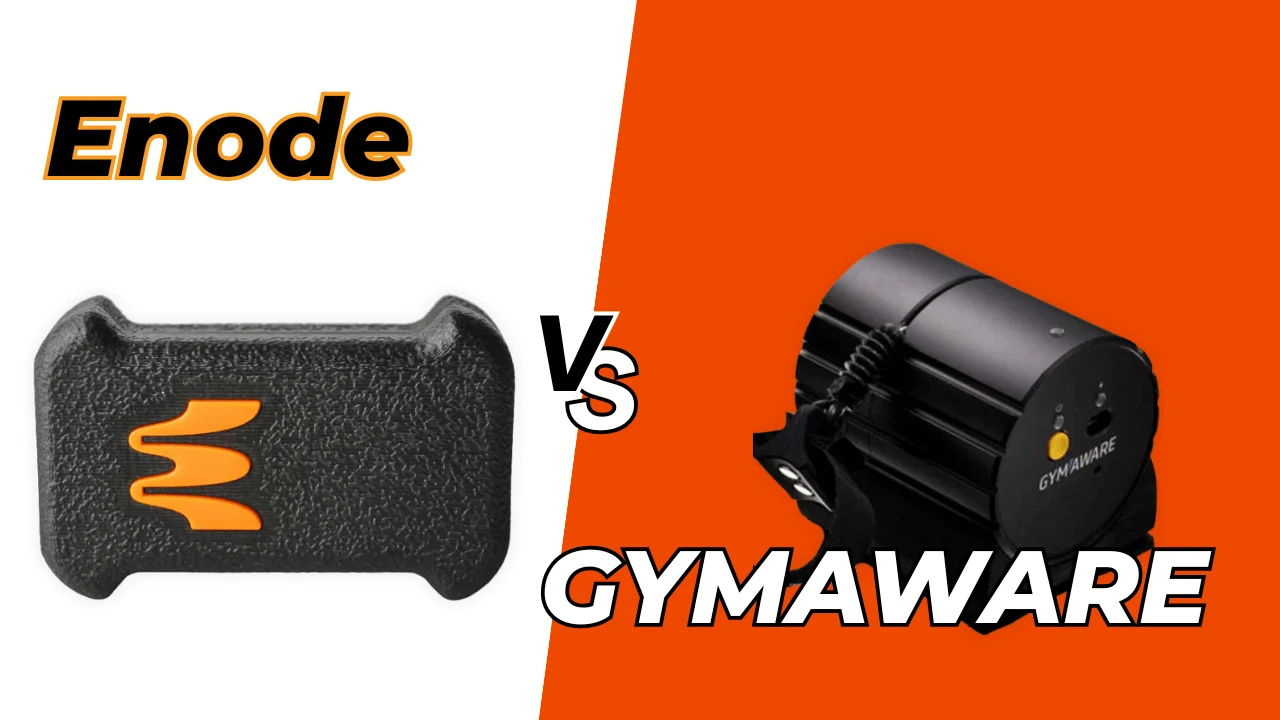[mashshare]

In the world of basketball, we work with quite a few athletes who are well above average height. It is not uncommon for collegiate or professional basketball organizations to have rosters of players with an average height of 6’5”, or 6’ for the league that I work in. That’s a great trait to have for the sport and allows those athletes to do some remarkable things on the court. However, although having great height and length can be advantageous, it can also wreak havoc on movement patterns that vertically challenged individuals like myself take for granted. And when movement problems arise, so does the potential for an increased risk of injury.
Getting off the Ground Is a Cornerstone to Sports
Most of what we talk about in the realm of strength and conditioning relates to developing better athletes. Well, most of the players I see are already pretty good athletes. They’re fast, they can jump high, and they’re highly skilled. That’s why they’ve made it to the professional ranks.
What I don’t have are very good humans (in a movement sense). I attribute most of that to the culture of training in the sport. The sport of basketball is notorious for early specialization and countless hours spent on the court for skill work, all year long, with very little energy and effort put towards developing general movements and physical attributes.
When #movement problems arise, so does the potential for an increased risk of injury, says @chaser_strength. Share on XGetting up off the ground, squatting or kneeling to pick something up, hinging into a good “athletic stance,” or gracefully falling back down to the ground are all actions that a lot of taller humans struggle with, and rightfully so. Having a frame that size makes movement, especially in deep ranges of motion, quite difficult if that frame has never been in those ranges. To that point, very little of what I do is geared towards building better athletes, but instead to building better human movers. Consequently, a nice side effect of being a better human mover is becoming an even better athlete.
The goal of this article is to share some of the movement problems I see daily with my taller athletes and how I attempt to solve those problems by teaching foundational and fundamental human movements. I hope that you can utilize some of this information in your own practice if you see a similar need with your athletes or clients.
Why Schwarzenegger Knows Best
Arnold said it best: Get down!!! Learning how to get down and interact with the ground, with more than just our shoe-covered feet, is a crucial skill to becoming a better human being. As infants, we interact with the ground more than any other time in our lives, and we use it as the foundation upon which we layer our growth and development. The most amazing part about that entire process is that nobody instructs us how to roll over, sit up, or crawl. Or even if they do, we don’t comprehend it—we just do it!
We use the ground to help develop the neural connections and pathways that allow us to perform these movements. It’s amazing to think that this all happens at such a young age, and yet they are skills that most of us eventually unlearn. Once we progress to walking, we decide rolling and crawling are no longer useful and we leave behind the simplest of human movements.
If you don’t believe me, go watch a tall person try to move around on, or get up from, the ground. It’s very likely that it will appear difficult, and almost painful. There’s also a good chance that sometimes it IS painful. It’s one of the hardest things for me to watch my athletes do. The simple act of getting up from the ground—the most basic human movement if there ever was one—has become a physically taxing task for a lot of them. In a sport that is played in the clouds, these athletes have forgotten how to interact with the ground.
Video 1. Block Zero means that, before you start loading with extreme intensity, you need to make sure the athlete has maximized the necessary prerequisites of movement. Simple motions on the ground are excellent starting points for more demanding weight training.
So how do we fix this? We start with Block Zero. Block Zero is not a new concept for the strength and conditioning world. It usually consists of developing relative/internal strength by perfecting bodyweight movements before moving on to their loaded counterparts.
Basketball is played in the clouds, and athletes have forgotten how to interact with the ground, says @chaser_strength. Share on XI take my Block Zero one step back from that. For us, Block Zero is about taking it back to the most basic of the basics. We start with a variety of ground-based locomotion strategies. After that, we progress to a variety of get-up strategies, learn how to fall safely, and then eventually proceed to bodyweight movements like the squat, hinge, lunge, etc.
Phase 1 of our Block Zero consists of rolls and crawls.
Video 2. All athletes, regardless of sport, can benefit from fluid control of their spines and legs. Squatting doesn’t need to be from the top down; rolling is a great way to teach movements from the ground up.
Rolling, Rolling, Rolling
At some point in a person’s athletic career, they are going to fall. Teaching athletes how to fall gracefully and not hit the ground like a sack of potatoes is a good way to help keep them healthy, which is our ultimate goal. It also helps them transition quickly and efficiently back to their feet. To fall safely, you must be able to roll smoothly once you hit the ground, and smooth rolling requires a flexed trunk.
Whoa, whoa, whoa! Aren’t we supposed to keep a neutral spine at all times?! This may ruffle a few feathers, but I believe it’s important to not only be able to get in and out of flexion/extension with ease, but also to be able to brace and maintain under load in flexion/extension. Having the ability to get into a gross flexion pattern, maintain it, and absorb some type of load is a pretty important aspect of smooth and safe falling. So, before we get into our various rolls, we start by learning how to brace in flexion with hallow holds, hollow rocks, turtle rocks, and roly-polies. This all sounds like something you’d see in an elementary school P.E. class, but that’s the point!
Once we’ve mastered the braced flexion, the rolling begins. We start with back to belly/belly to back rolls (they’re harder than you might think), and then we transition to a forward and backward “gymnastic” style roll where the athlete rolls right over the top of their head. Then we finish with more of a “parkour” style of roll, which is like the gymnastics roll except that the roll happens over the shoulder and across a diagonal angle of the back.
Development of the skill of rolling may decrease the likelihood of an injury happening during a fall by enhancing proprioceptive coordination and improving the function of the vestibular system, which can lend itself to improvements in other areas of movement as well.
Video 3. Most athletes have exposure to forward rolls, but adding diagonal rolls is a good idea as well. Simple rolling is a lost ability, likely gone due to too much specialization.
Video 4. Backward rolling is just as valuable as forward rolling, and adding a few minutes during warmups or even warm-downs is a fine option. Remember that a backward roll is not just for falls, but an athlete can use it for basic self-care if done in the beginning of a training session. *It’s important to note that we practice these movements on a padded surface to ensure athlete safety as they learn.
Teaching and Instructing the Crawling Pattern
We’ve all heard the saying “You gotta crawl before you walk.” As cliché as it sounds, it’s true. Crawling is the foundational pattern that allowed us to progress to walking. It’s how we develop a gait cycle. Just like walking, crawling is an alternating reciprocal motion of the limbs created by coordinated firing of muscle groups in the legs, trunk, and arms.
Sometimes we forget how involved the arms and shoulders are in gait, but they are a crucial part of walking and running. When we crawl, we get our hands back on the ground and stimulate mechanoreceptors that reactively fire muscle groups throughout the body, rebuilding foundational strength of the shoulders, trunk, and hips, and improving inter- and intra-muscular coordination and reflexive joint stability.
Video 5. Static positions are starting points for a lot of athletes for good reason. Athletes are not babies, and crawling is a different loading stress. It needs to be tough in a mature fashion, not just sprinkled in a program.
I see a lot of basketball players with rough gait cycles, so my go-to fix is getting them back on the ground and learning to crawl. Back to the basics! We begin with holding the crawl position for time to establish a strong position. Our crawl position looks a little different than what you might have done back in middle school football practice. Our starting position begins with flat hands on the ground and the balls of our feet as our contact points. Making sure we have our wrists under the shoulders, our hips under the knees, and a neutral spine, we rise just enough to get our knees 2 inches off the ground.
Video 6. It’s easy to get carried away with crawls and overprescribe them in training. The key is to make athletes aware of the pattern and know when they are ready to move on.
Once we’ve mastered the static position, we then progress to forward-moving crawls, lateral crawls, and finally backward-moving crawls. One of our big focuses with crawling is gaining the ability to stabilize the trunk while we move through flexion/extension and abduction/adduction at the hips and shoulders. If we can create stiffness in the trunk, we can effectively transfer energy produced by the lower limbs to the rest of the body.
Rolling and crawling, and their respective progressions on the ground, make a nice segue into our next phase of Block Zero. Like everything else, they eventually tie together.
Get Up and Go!
If I asked you to think of someone who may have trouble getting up off the ground, you would probably think of an elderly person in a Life Alert commercial. But the reality is that there are people of all ages that have trouble with this basic human skill. That skill becomes increasingly difficult the taller and longer a person is. It’s a lot of body to move, and it isn’t easy if you don’t practice it on a consistent basis.
Athletes who have always been tall have difficulty getting down to the ground and back up again. Share on X
This is a problem I see every day. Athletes who have been tall their entire lives find it difficult to get down to the ground and back up again, so they do everything they can to be in that position as little as possible. When they do end up on the ground, they often reach a hand up for help back up. What?! You’re an athlete, so be an athlete and get back up on your own! This leads to a movement skill that isn’t available when it’s needed most—during a game.
Video 7. Less common movements are great to challenge athletes and see how they solve coordination puzzles. Athletes learn to be in deep positions safely by using the Shin Box Get-up.
We see it on the court all the time. An athlete hits the ground for whatever reason and doesn’t get a call. Play continues, and now our team is essentially playing four on five because so-and-so over there is going through a painstakingly slow progression back to their feet. That may seem like an exaggeration, but a lot happens in just a few seconds on a basketball court, and an athlete spending all that time on the ground doesn’t do us much good. We need athletes up off the ground and back into play as quickly as possible.
Video 8. You don’t need to load every movement to be a better athlete, and simplified Turkish get-up variations are great. A focus on getting off the ground with athletic motion is good for athletes learning to get outside their sport’s comfort zone.
To solve that problem, we transition into Phase 2 of Block Zero with our get-up variations. There are countless ways to get up off the ground from all different starting positions, but the few we begin with and focus on in this training block are from the lying prone, lying supine, and seated positions. We start with the lying prone position with push-up to crawl and push-up to lunge get-up, then finish with the push-up to squat get-up.
Next, we move to the lying supine position with the no-handed sit-up to shin box get-up variations, then to no-handed sit-up to crawl position get-up variations, and finish with our Turkish get-up progressions. Seated get-ups come next. This list could go on and on, so I’ll save you some reading time and attach a demonstration video with these progressions.
Video 9. Adding a sit-up motion is a natural progression of learning to get on your feet and moving. A big difference exists between a connected movement pattern and an isolated movement pattern done excessively.
Not only do get-up variations help us solve a movement problem that we encounter on the court, they also give us solutions for a host of other problems we see within our athletes’ bodies.
Need joint mobility? Get-ups force us to actively access joint ranges to get into proper positions. Need joint stability? Many get-ups are quasi-unilateral in nature, forcing us to stabilize a joint while we move through its ROM. Need “core” strength? Get-ups require dynamic and reflexive bracing of the trunk to complete the movement safely and successfully. My point is, get-up variations are a great bang-for-buck exercise that checks a lot of “needs” boxes for our athletes.

Big trees fall hard, but do they have to?
As stated earlier, all athletes will fall to the ground at some point in their career, and those that are in contact sports will fall a lot. Hell, I’ve even seen golfers fall after an awkward, off-balance shot. If you’ve never seen someone who isn’t good at falling tumble to the ground, stop reading and go search the internet. There is a pretty solid chance a lot of those videos will be of injuries, because that’s what happens when our athletes don’t learn how to fall properly. Obviously, not every un-athletic fall results in an injury, but as falling is a part of sports, I’d rather lower that risk as much as I can before something eventually does go wrong.
If you’ve seen bad falls, you’ve probably also seen great falls. The kind of fall that makes SportsCenter’s Top 10 the next morning because it was so graceful and athletic, which probably resulted in that athlete getting back into play and doing something awesome. It’s almost impossible to replicate a game-like scenario when it comes to falling because falls are usually unpredictable and completely unexpected. However, if we can teach an athlete to fall smoothly and gracefully from a variety of positions and situations, from external forces or on their own accord, then we can keep them healthy and get them back into play quicker when a real fall does occur.

Despite the lack of pads worn during a game, basketball is definitely a contact sport. Because of that fact, I want my athletes to be prepared for when they inevitably hit the (hardwood) floor. This part of the Block Zero doesn’t get its own phase, as we start to implement this pretty quickly into our warmups once we’ve learned how to brace in flexion. Because many of our roll and crawl positions are used in falling, we progress them together.
Not only can learning how to fall correctly make the real event safer, it may help us fall less, says @chaser_strength. Share on XIf we can learn to hit the ground in braced flexion, we can roll out of the fall and not only dissipate the impact forces across the entire body instead of absorbing them with the hip or shoulder, but also end up in a crawl position that is easier to stand from. So, once we’ve learned certain roll and crawl progressions, we string them together into a controlled fall variation. We start from a tall standing position each time. The athlete then descends to a squat or lunge position, and then into a backward, forward, lateral, or diagonal roll from there.
Not only can learning how to fall correctly make the real event safer, but it may also help us fall less. Learn how to fall, to fall less? That’s right! Maintaining balance is dependent on the information gathered by the brain from three peripheral sources: the eyes, muscles and joints, and vestibular organs. Signals are sent to the brain from sensory receptors located in each of these sources. With input from all three sources, the brain analyzes the information and integrates it with previously learned information. This previously learned information provides automatic movements based on repeated exposure to certain situations.
After the input is sorted through and integrated, impulses are then sent out to the muscles needed to control movement, stabilize and clear vision, and ultimately maintain balance. This is called motor output. These are important factors when it comes to practicing falls. If we can regularly expose an athlete to as many different falling scenarios as possible, then with previously learned information and increased function of our sensory input sources, they can better navigate the situation when it reoccurs.

Squat and hinge patterns: Movements first, then exercises
I won’t spend too much time on this section, as there are thousands of great articles on squat and hinge patterns, and their respective benefits as they relate to increased athletic performance and decreased risk of injury. You’d be hard-pressed to find a strength and conditioning department that doesn’t program at least one variation of a squat and hinge pattern with their athletes. However, it would also be fairly easy to find a department that doesn’t teach these patterns very well.
That statement is going to piss some people off, and that’s OK because it pisses me off that we have what seems like endless information on these movements, yet we still have sloppy patterns being thrown around all over social media. What’s worse is this idea within the world of basketball that players shouldn’t squat too deep or hinge too far because of how tall they are. Let’s pause here while we think about the absurdity of that statement…OK, moving on.
Let me preface the following information by stating that this is not the case throughout the entire industry. There is a group of strength coaches who understand the need for these movements with the taller populations and, more importantly, know how to solve the movement problems and teach correct patterns. Kudos to those coaches that see height and length as a unique opportunity and challenge, and not an excuse to throw basic patterns out the door simply because they don’t know how to teach them to an athlete that doesn’t naturally have perfect squatting and hinging techniques.
Kudos to coaches that see height as a unique challenge, and not an excuse to forgo basic patterns, says @chaser_strength. Share on XI think we can all agree that the anthropometrics we see with a lot of basketball players can make the squat and hinge patterns a little more difficult to perform, but I see that as the very reason they should be doing these movements, not shying away from them! Building strong and stable joint structures and tissues through full ranges of motion with proper technique and appropriate loading is a great way to reduce the risk of injury rates in our athletes. Tall and long-limbed athletes are not exempt from that line of thinking just because it can be more difficult to achieve. And if you believe, as I do, that a large amount of our basketball athletes have spent very little of their lifetime near the ground, then it would be even more pertinent that they do so under our guidance!
Earlier, I discussed how it can be difficult for taller athletes to get up and down from the ground, how they try to stay out of those ranges of motion as much as possible, and how that can create quite a few issues. I then proceeded to discuss how we go about getting them back down and interacting with the ground so movement could become easier, more efficient, and pain-free with this version of the Block Zero protocol. What I didn’t discuss during all of that was how we use the squat and hinge patterns the entire time without really teaching them.
Because squats and hinges seem to be taboo in the early development of most basketball players, asking an athlete to perform these movements can trigger immediate pushback. I get it all the time with incoming rookies and trades. They were either told to never squat or hinge (too far over), or they got hurt performing one of these movements because they were taught incorrectly, so now they have a fear of the movements. Fearmongering from the weight room is all too real in basketball, so my goal is to trick them into performing the MOVEMENTS before I teach them the EXERCISES.
Before I ever ask an athlete to perform a loaded squat or hinge exercise, I simply teach them how to get down to the ground and back up again using these movements. Within the get-up variations, we see squatting and hinging patterns. So, I establish solid squat and hinge patterns within our get-up and get-down progressions, with as little cueing as possible, allowing them to learn how to get into proper squat and hinge positions. When I do have to cue, I try not to use the words “squat” or “hinge”; instead, I use external cueing to achieve the positions I’m looking for.
What I’ve come to find is athletes learn these positions quicker and without preconceived notions and fear, because they only see them as getting down and up from the ground, whereas I see it as squatting and hinging hidden within another movement. When we finally do get to actual exercises like front squats or RDLs, I continue to use the same external cueing as before, as well as getting them to mimic parts of movements we’ve already learned. I’ve found great success utilizing this method of teaching, but remember that there are a thousand ways to skin a cat, and this is simply the one that I’ve found works with our athletes.
Final Thoughts on Squat Movement Development
One of the most important lessons I’ve learned from working with the basketball athletes and their unique structures is that we have to build better human movers before we think about building better athletes. I believe that if we can get our tall athletes to move like our small athletes—falling smoothly, getting back up with ease, squatting and hinging into great athletic positions with no pain; all things that many of us take for granted—we can build upon the solid foundation that is basic human movement and develop durable, robust, and healthy athletes.
We have to build better human movers before we think about building better athletes, says @chaser_strength. Share on XBecause this is my first article, I’d like to take a moment here to express my gratitude to the outstanding strength and conditioning coaches I have been fortunate enough to work for over the past few years. I attribute much of what I have learned to my mentors, Jason Roberson, Shawn Windle, Lee Taft, and Gary Christopher. Without them, I wouldn’t be anywhere in this profession. I’d also like to thank Daniel Roose, Cory Schlesinger, Ryan Horn, Andrea Hudy, and the others who were kind enough to return calls, answer emails, open their doors, and share their valuable experience and knowledge over the past two years.
Since you’re here…
…we have a small favor to ask. More people are reading SimpliFaster than ever, and each week we bring you compelling content from coaches, sport scientists, and physiotherapists who are devoted to building better athletes. Please take a moment to share the articles on social media, engage the authors with questions and comments below, and link to articles when appropriate if you have a blog or participate on forums of related topics. — SF
[mashshare]




